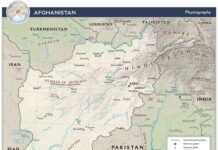Context
 All the pieces are slowly falling in place; Indian election is over and that of Afghanistan is also moving towards a closure. Whoever is the new Afghan president, the candidates have indicated they will sign the Bilateral Security Agreement with the US. And President Obama has also finally announced the level of American troops that will remain there from 2014 to 2016, contingent upon the signing of the security agreement. Gen Martin E. Dempsey also stated a few days earlier that Pakistan and Afghan counterparts were informed of the US decision and both were satisfied.
All the pieces are slowly falling in place; Indian election is over and that of Afghanistan is also moving towards a closure. Whoever is the new Afghan president, the candidates have indicated they will sign the Bilateral Security Agreement with the US. And President Obama has also finally announced the level of American troops that will remain there from 2014 to 2016, contingent upon the signing of the security agreement. Gen Martin E. Dempsey also stated a few days earlier that Pakistan and Afghan counterparts were informed of the US decision and both were satisfied.
A number of questions, however, have been raised; are the number of US and NATO troops to remain sufficient to secure the country in the next two years. Particularly, when Afghanistan has long maintained its security is linked to the cross border movement of Taliban from their refuge in FATA. On the other hand, Pakistan often says that stable Afghanistan is of utmost importance for the return of normalcy to their country.
In this context, the US gradual drawdown, the recent Pakistan military strikes in North Waziristan, the nations attempt to negotiate with TTP, and Prime Minister Nawaz Sharif’s visit to India to participate in Modi’s inauguration, have all taken on added emphasis. Missing from this equation is the talk of Afghan reconciliation. These are obviously all interrelated events, and attempt to understand them independently will not be sufficient to grasp the overall situation.
Analysis
Status of Pakistan’s Talks with TTP
In this correlation, the first question that pops up is the status of Pakistan talks with TTP. Different interpretations have come to the fore in this regard. Have they completely failed and thus resulting in the military strikes? Or, is it related to the fight/talk strategy that appears to be a part of Pakistan’s national security strategy.
According to statements from the TTP side, the recent military strikes in North Waziristan indicate that the nation is moving towards a much-expected full-scale operation. On the other hand, Pakistan’s army has clarified the air strikes, and other actions recently conducted, are part of the retaliation to attacks carried out by the Taliban. Certainly ever since Gen Raheel Sharif assumed power, every TTP attack has been met with an immediate response. Meanwhile, western media sources are consistently pointing to the civil-military tensions on the talks with TTP, and that the military has all but decided to go ahead with a full scale offensive.
Another argument indicating that this may actually be the much-hyped operation has to do with the recent splintering of TTP. This has long been a goal of Pakistan’s strategy, including that of the US i.e., to weaken the connections between the various extremist groups constituting the AQ and associates. While some of these associates are involved in India and Middle East, others (ETIM) are linked to disturbances in Xingjian province of China. In May a series of violent events caused the death of about 79 people in this resource rich region that borders Central Asia.
Good, Bad, and Punjabi Taliban
An aspect connected to the stabilization of FATA has to do with the Afghan reconciliation and the classification Pakistan has used in applying kinetic force: the ‘Good’ and ‘Bad’ Taliban. Recent events seem to suggest that Pakistan has now dropped this classification. If true, this represents a game changer. There is ground evidence to indicate that some of this is actually materializing, such as the comments made by the Hafiz Gul Bahadur after the May 20th airstrikes in North Waziristan. In the aftermath of this action, he was quoted by media as saying that his group was evaluating the peace treaty with the Pakistan government. Clearly implying his group had come under attack from the military.
According to media reports appearing on May 23rd that quoted unnamed security official, the target of the strikes on this date were the members of ETIM. The same report also states the air attack was in retaliation for the killing of security personnel and civilians across the country. On May 19th, A Chinese tourists was also abducted in DI Khan apparently by TTP linked extremists.
When it comes to Punjabi Taliban or India oriented jihadist, the ‘Good’ and ‘Bad’ Taliban terminology does not apply, they have also facilitated and assisted the Afghan Taliban. The ties with India and the future behavior of Modi’s government will likely determine Pakistan’s strategy towards these groups. This is one of the key reasons India has been so involved in shaping the outcome of Afghanistan. The victory of Afghan Taliban there can translate in their reciprocity towards India oriented jihadists in the future, as events of the past suggest.
The Status of Afghan Reconciliation
A critical question related to the US/NATO withdrawal from Afghanistan has to do with the status of Afghan reconciliation. Will US withdraw irrespective of the political reconciliation between those fighting and the elected? The Afghan elections and the delay in signing the Bilateral Security Agreement have pushed back the political settlement even further.
Afghan Taliban has already reacted to the US status of forces announcement negatively. “Now that Obama has announced that he will keep around 10,000 troops until the end of 2016 and continue their occupation, Afghanistan Islamic Emirate condemns it and considers it a violation of sovereignty, religion and human rights,” a Taliban statement reported in the media said.
Coming back to Pakistan’s operation in North Waziristan
Pakistan’s operation there may not be the full-scale version with bells and whistles, as was witnessed in Swat in 2009. Obviously the terrain and dynamics of Waziristan is different. It could very well be the action-reaction format that we are presently seeing. Plus, the Taliban have already had enough notice to escape across the border. And in this regards, the future intent of Afghanistan and India towards Pakistan will become more critical. Meaning, will they assist in preventing this from happening, or will they provide refuge and then use them against Pakistan at a later time.
Thus the most important component of what and how Pakistan moves forward is dependent on the Afghan political settlement. Until the TTP is pressured, Afghan Taliban are unlikely to sit down on the table. At the same time, TTP will not settle politically before the Afghan Taliban do. Nonetheless, the political and military pressure on TTP may either lead to more infighting between various groups, as being witnessed presently, or it may simply cause the group to disintegrate into more splinter factions. This outcome is not without its own inherent risks. TTP is more of a fighting machine and never had the political acumen to build consensus amongst it various factions.
It is quite possible that US and Pakistan have agreed on the broad contours of the Afghan settlement. By which Pakistan is free to decide on what format to employ to achieve the objectives in North Waziristan and FATA. The stoppage of drone attacks may also be part and parcel of this understanding.
The weakest link in this process may be the present political setup, which may have to deal with the political blowback. This is especially true if the above strategy leads to a serious backlash from the extremists, with further impact on the economic prospects of the country. As Pakistan drops the good and bad Taliban distinction, the reaction could also become more versatile. This may be in the form of Chinese interests increasingly being hit in Pakistan, as it targets ETIM.
On the other hand, American talks with Iran related to its nuclear program are also moving ahead. With Iran potentially on board in the future, stability in Afghanistan can be achieved. This only leaves Pakistan-India equation and the dynamics of US-China relations to worry about.



